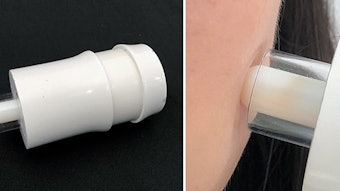TRI/Princeton is conducting a benchmarking study on the rinsing of shampoos and conditioners to allow manufacturers a lower cost option for product testing. In comparison with individual tests, "Rinse Profiling and Wet Combing," which will take place on June 15, 2011, will utilize shared controls, commercial benchmarks and reduced labor costs.
According to the research center, the experience of rinsing (i.e., fast or slow; squeaky clean or depositing) and the changes that cue the consumer to stop rinsing are critical to the design of any rinse-off product. The center's experimental method for shampoos and conditioners has been designed to help identify a formulation's rinse characteristics, compare those characteristics to marketed products, and tailor the in-use experience to match the formulator's product concept.
Unlike panel tests with large statistical variations, work to date has demonstrated that the center's Rinse Profiling Methodology provides excellent statistics and produces repeatable and actionable data to assess shampoo and conditioner products for speed of rinse, final lubrication, and detangling ability. The method used is a proprietary variation of the standard wet combing force test using a custom fabricated combing force fixture with an Instron tensile tester to evaluate frictional forces while a hair tress is pulled through a comb.
The Rinse Profiling measures wet combing forces during various incremental levels of rinsing. This method is able to differentiate shampoos and conditioners as the rinse level increases. The force required for each stroke is recorded and that force is limited to a reasonable value (400 g). If that value is exceeded, such an occurrence is recorded as a "tangle."
To help introduce this method, each measurement will be paired with the established method of wet combing. To participate, companies must submit samples by June 15, 2011. Participants will receive results from their submissions, blinded results of all study samples, and detailed identified results of all 10 commercial benchmarks. The commercial benchmarks will be identified by name and ingredient label and are leading products in both the prestige and mass markets. The pricing varies for members and non-members.










